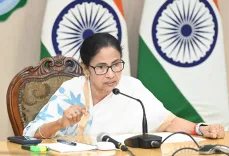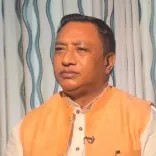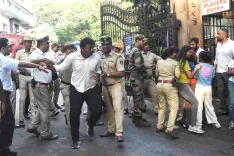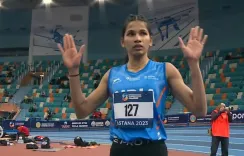How Did PM Modi Seal Gujarat's Legacy for a Millennium with a 'Time Capsule'?

Synopsis
Discover how PM Modi's innovative 'Time Capsule' initiative commemorates Gujarat's rich history while bridging the past with the future. Encased at Mahatma Mandir, this enduring tribute holds the essence of a state poised to be unveiled a millennium later.
Key Takeaways
- Gujarat's Time Capsule was sealed in 2010 to preserve its rich history.
- Constructed from durable materials to withstand the test of time.
- Holds significant documents in four languages.
- Aims to connect past, present, and future.
- Symbolizes identity and resilience of Gujarat.
New Delhi, June 7 (NationPress) On this memorable date in 2010, commemorating half a century of Gujarat’s statehood, the then Chief Minister Narendra Modi—who is now the Prime Minister—launched an innovative project aimed at intertwining the past with the future. At the Mahatma Mandir in Gandhinagar, he encased a Time Capsule that encapsulates Gujarat’s evolution since 1960, ceremoniously burying it underground. This capsule is set to be unveiled a millennium later.
The significance of this moment was recently revived through a video shared on Saturday by Modi Story, a well-known social media account on X, titled: “Gujarat’s Time Capsule – Modi’s Tribute to a Timeless Legacy.”
Constructed from premium stainless steel and weighing 90 kilograms, the capsule—known as Kaal Sanduk or Smriti Manjusha—is designed to endure the passage of time. It embodies the essence of Gujarat’s transformation—from its ancient roots in trade, culture, and spirituality to the astounding developmental progress witnessed over the past fifty years.
The capsule is filled with a carefully selected array of documents and artifacts, including citations of Mahatma Gandhi’s principles, the historic address by Ravishankar Maharaj that inspired the formation of Gujarat, and a comprehensive narrative of the state's sociocultural and historical achievements. These documents are inscribed in four languages: Gujarati, Hindi, English, and Sanskrit.
Yamal Vyas, Chairman of the 4th Finance Commission of Gujarat, shared insights on the capsule’s importance in the Modi Story video.
“In 2010, Modi ji proposed a forward-thinking idea to safeguard culture. The capsule contains a concise yet comprehensive history of Gujarat, articulated in four languages, alongside a detailed account of the state’s progress over the past fifty years,” he remarked.
Even the writing materials were meticulously crafted for durability. The texts were inscribed on a special paper interwoven with plastic, ensuring their readability for generations to come.
This time capsule transcends mere storage of the past—it represents Gujarat’s voice, resonating into the future as a symbol of identity, strength, and foresight.





